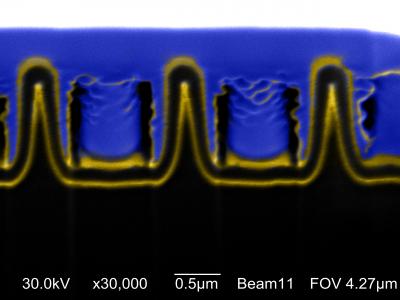
- Image via Wikipedia
Emerging technologies successfully stimulate retinas ravaged by retinitis pigmentosa, age-related macular degeneration and other diseases to give sufferers a new lease on light.
Scientists have been working for decades to create an optical prosthesis that restores at least partial vision to those suffering from retinitis pigmentosa, macular degeneration and other retina-damaging diseases. Some retinal implants have begun to deliver on that promise, but the challenge remains for researchers to develop a technology that, in addition to providing clear images, can be worn comfortably over the long term.
Germany’s Retina Implant, AG, thinks it has made great strides in both areas, an assertion that will be put to the test later this year when the company launches its phase II human clinical trial, placing subretinal (under retina) implants in about 50 patients over the next few years. Meanwhile, Sylmar, Calif.–based Second Sight Medical Products plans to make its epiretinal (over retina) implants commercially available in Europe later this year. Researchers at the Massachusetts Institute of Technology and other institutions and medical technology companies are likewise developing retinal implants—the retina lines the eye’s inner surface and records images in patterns of light and color—but are not as far along as Retina Implant or Second Sight.
Retinal reawakening
Retina Implant’s initial human clinical trial, started in 2005, improved the eyesight of 11 patients to the point where they were able to recognize objects as well as see shapes so clearly they could combine individual letters to form words or, essentially, read at a basic level at normal reading distance and in regular light conditions, says Eberhart Zrenner, the company’s co-founder and director and chairman of the University of Tübingen’s Institute for Ophthalmic Research in Germany. Zrenner presented the trial’s results in May at the 2010 Association for Research in Vision and Ophthalmology‘s annual meeting in Fort Lauderdale, Fla.
Retina Implant’s phase II clinical trial seeks to implant the latest version of the company’s technology in a larger pool of patients. The new implant no longer has external parts—its power supply is positioned under the skin behind the ear, connected with a thin cable that leads to the eyeball so that the chip does not move once implanted. (This could damage the chip.)
Related articles by Zemanta
- Bionic Vision Australia puts bionic eye in sight (eurekalert.org)










